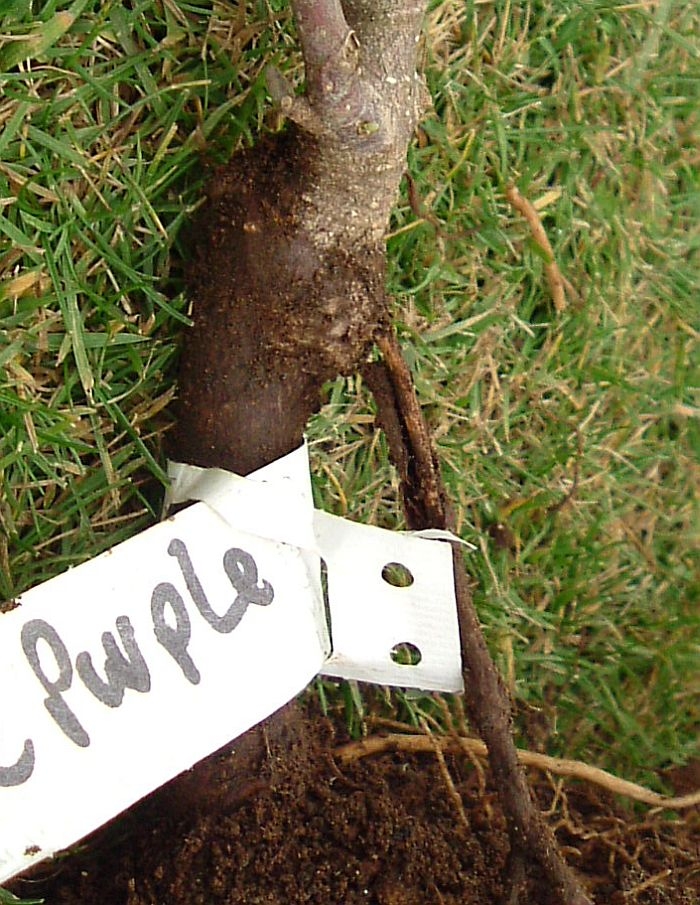Growing Magnolias in New Zealand
Taranaki Experience
Our climate is ideal for magnolias with the even rainfall and free draining soil, but the soil is light and its volcanic nature means it is low in phosphates. Varieties such as ‘Ian’s Red’ (from Drury, South Auckland) and ‘Genie’ (raised locally) which are the reddest varieties in NZ, usually improve in other areas with soils more suited to the nutrient requirements of magnolias. Magnolia Dark Shadow has been tried locally and performed quite poorly colourwise. the following information is based on Taranaki experience, but the basic principles apply to magnolias everywhere.
Magnolia Planting
Planting: Magnolias are surface rooting plants, and if transplanting an established seedling or plant grafted on a seedling, you may notice new roots radiating from the stem above the older roots. These roots in the natural forest situation where they originate will grow out through the leaf mould on the forest floor to absorb nutrients released as the fallen leaves break down. As a result of this natural adaptation Magnolias like a cool root zone so a good mulch after planting will pay dividends. You may have noticed that magnolias don’t thrive until their roots become shaded, either by themselves, or surrounding companion plants..
When planting magnolias dig in as much compost as possible and work the soil in an area twice the diameter of the root ball of the plant. Place the plant in the hole then put in a strong stake before back filling so that the roots are not damaged by putting it in afterward.
Watch the plant does not get too dry in the first season since magnolias spend the first year from planting getting settled in, especially if they were field grown before sale. If they get too dry they will tend to sulk.
If there is some concern about bad drainage, plant your magnolia in a slightly raised bed so it does not sit in a pool of wet soil. This is particularly a problem in heavy Auckland and Northland soils. In these soils, planting on a slope is easier, and it is an advantage to condition the soil to improve drainage by making the planting hole oval shaped out to the edge of the slope, so that the bottom of the hole is level with the lip on the bottom side of the hole.
If you want to plant a magnolia near water, make sure the plant has 40 – 50 centimetres of well prepared and aerated soil above the water table to get itself established in. It will appreciate the close proximity of the extra water, but let it decide how close it wants to put its roots to it.
When transplanting a magnolia it is best to move as large a block of undisturbed soil as possible and the resulting stress will be proportionally less. If the root ball gets disturbed or even shaken out completely, then the plant will benefit from a reduction of branches by at least a third. Evergreen species should be root-pruned in autumn before transplanting, and deciduous species are best moved when dormant, though they can be treated as evergreens and root-pruned for shifting in the autumn, as long as their growth has matured when the root-pruning process starts. If you have to move one in growth, trim out all the active growing tips, and if possible spray with an anti-desicant spray at label rates.
Fertiliser for Magnolias
Magnolias generally don’t need much feeding once established. For the first year or two an application of balanced garden fertiliser will strengthen the plant, and after this an annual application of well rotted compost, in addition to mulch, will encourage strong healthy growth, and increase the moisture retention in light soils and lower rainfall areas. Addition of Potassic Superphosphate is advisable in light Taranaki soils as Phosphate tends to be locked in our soils. We get enough nitrogen in our rain. Mulching fallen leaves with a lawnmower and placing this around the root zone, in addition to spring mulching, will help recycle nutrients added in previous years. Do not mulch too deeply at any time, but build up over several years will encourage roots from higher on the stem as illustrated.


My young tree has been attacked by the geese at the base.
How do I go about protecting the young truck from disease while it heals?
Thanks